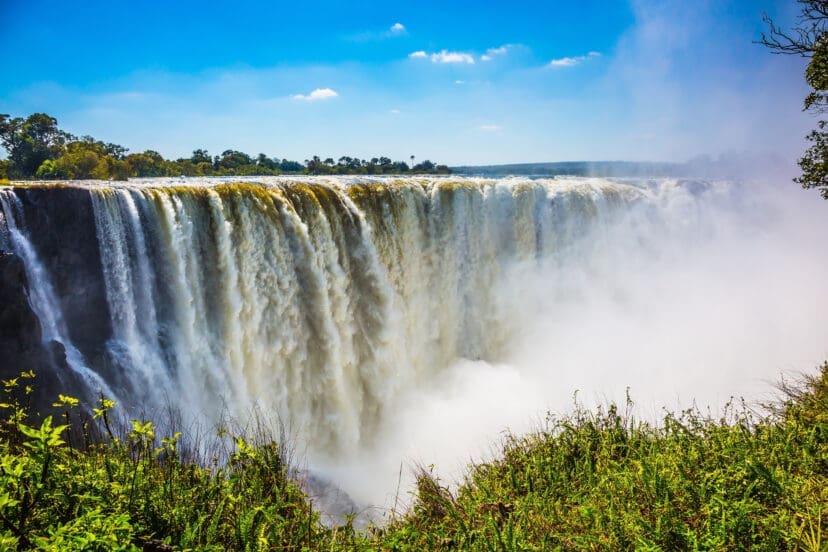Victoria falls, one of the natural wonders of the world is at risk of completely drying up unless serious action is taken to tackle the climate crisis.
The once powerful waterfall – which borders Zambia and Zimbabwe – is almost unrecognisable after a recent drought has reduced water levels at the falls to their lowest in 25 years.
Zambia’s president, Edgar Lungu, has warned of the dangers of climate change, saying the impact is being felt most of all in developing countries such as his.

Although the falls do typically dry up during the dry season, officials say this year has brought an unprecedented decline in water levels. According to Zimbabwe’s Ministry of Environment, Climate and Tourism, the average flow over the falls this year is down by almost 50%.
In an interview with Sky News, Mr Lungu said:
“Do we want to want to pass on the Zambezi without the mighty Victoria Falls? Do we want to pass on Africa and the next generation without the mighty Victoria Falls? Is that what we want? There are practices and measures we can take now.”
President Lungu said there is still hope, but only if wealthy countries do more to combat climate change and help poorer nations cope with the effects. In countries like Zambia, which is heavily reliant on hydropower from plants at the Kariba Dam, droughts such as this one mean millions of people go hungry.
Both Zambia and Zimbabwe have daily power cuts and have been forced to declare serious food shortages because of the extended drought, with more than two million people in Zambia and a further seven million in Zimbabwe thought to be in urgent need of food.
Mr Lungu continued:
“We have no time to play politics with climate change. It’s a serious problem and a genuine one and we are surprised when people trivialise it and say it’s not real.
They are living in a different world but this world we live in Zambia we are feeling the effect of climate change very adversely and they’re impacting on everyone… everyone.”
In October, the Zambian president tweeted pictures of the falls with barely any water descending over the dry rock face, and described them as a ‘stark reminder of what climate change is doing to our environment and our livelihood’.
Just this week, amid fears the news could deter tourists from visiting the falls, Zimbabwe’s tourism authority denied they were at risk of disappearing.
Board member Blessing Munyenyiwa said via The Chronicle newspaper: ‘It’s normal to have low water this time of the year but the falls will never dry in our lifetime. We haven’t had as much water as we have had in the past years but it’s not dry.’
However, Elisha Moyo, Principal Climate Change Researcher at Zimbabwe’s Ministry of Environment, Climate and Tourism, told the BBC’s Hardtalk last month the disappearance of the falls was a ‘serious possibility’.
He said:
“The low falls are becoming more frequent… Who knows, maybe one year there will be no falls completely, no water.”
Victoria Falls is classified as the world’s largest waterfall based upon its combined width of 1,708 metres and height of 108 metres.
SOURCE: UNILAD
